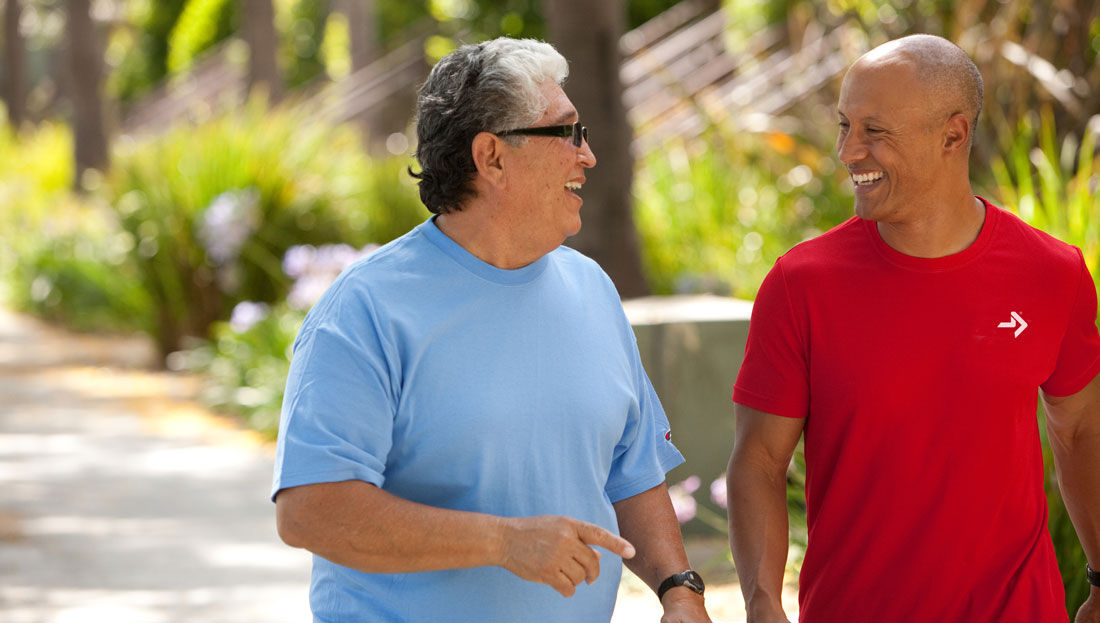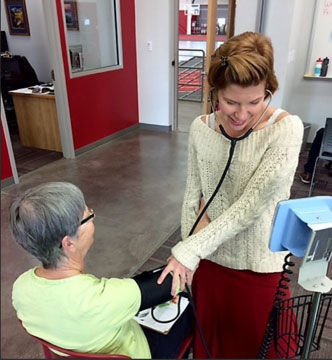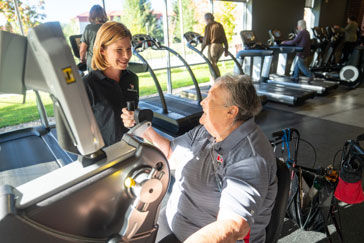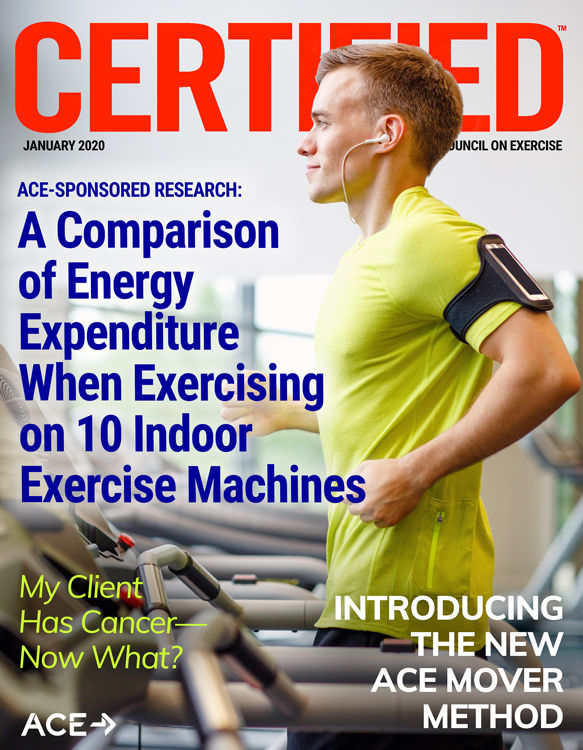
As a health and exercise professional, you know that your clients are resourceful and more than capable of change. And you’ve made it your mission to help them develop healthy lifestyle behaviors that they will be able to sustain over the course of their lives.
Making sure that you have the tools and knowledge you need to be the most effective resource and behavior-change guide for your clients is essential, which is why ACE recently introduced the ACE Mover Method. While the function–health–fitness–performance continuum provides a suggested sequence for training clients from the physically inactive to the performance-oriented, it does not address the individual components of fitness and how they fit together.
“ACE created the Mover Method to enable health and exercise professionals to provide clients with a truly personalized training experience that empowers the client to take ownership of his or her fitness journey and make strides toward achieving lasting lifestyle change,” explains Dennis Sanchez, ACE’s Health Coach Education and Training Lead. “It reinforces the idea that the client is in the driver’s seat of his or her fitness journey, rather than simply a passenger. Health and exercise pros using the ACE Mover Method ask thought-provoking questions that make it possible for clients to uncover their own unique path to well-being.”
Sabrena Jo, ACE’s Director of Science and Research and one of the drivers behind the development of the ACE Mover Method, believes that its evidence-based approach is what sets it apart in a space that is often crowded with promises of immediate results and short-term successes. And the desire to see people find long-term success—rather than a short-lived fix—was a motivating factor in its creation.
“The strategies used in the ACE Mover Method empower clients to improve their self-efficacy so they can increase their confidence to achieve their goals,” explains Jo. And a growing body of research suggests that self-efficacy is a significant factor in whether or not an individual is able to find success.
So, now that you know why ACE created the Mover Method, it’s time to dive into exactly what it is, how it fits in with the ACE Integrated Fitness Training® (ACE IFT®) Model and how it can help you become more effective in supporting your clients along their health and fitness journeys.

How Does the ACE Mover Method Work?
The ACE Mover Method is a philosophy stating that facilitating healthy lifestyle behaviors begins with empowering clients to take a personalized journey during which they achieve self-efficacy because the exercise professional or health coach practices empathy and trust, communication and collaboration. Through actionable steps, the ACE Mover Method offers a way for exercise professionals and health coaches to get people moving toward a better quality of life.
The ACE Mover Method is a key component of the ACE IFT Model, which is a comprehensive system for exercise programming that pulls together the multifaceted training parameters required to be a successful health and exercise professional. The ACE IFT Model organizes the latest exercise science and health-behavior research into a systematic approach to designing, implementing, and modifying exercise programs based on the unique abilities, needs and goals of each individual.
Research has shown that personalized exercise programming using the ACE IFT Model elicits greater improvements in cardiorespiratory fitness, muscular fitness and key cardiometabolic risk factors when compared to standardized exercise programming (Dalleck et al., 2016). Additionally, personalized exercise programming with the ACE IFT Model has been shown to increase training responsiveness compared to standardized exercise-training. Moreover, the ACE IFT Model provides health and exercise professionals with tools and methods to help clients make fitness-related behavior changes that facilitate physical-activity participation and adherence to make lasting improvements in health and well-being.
A key element of using the ACE IFT Model to empower clients to make behavioral changes to improve their health, fitness and overall quality of life is the adoption of the ACE Mover Method, which is founded on the following tenets:
- Each professional interaction is client-centered, with a recognition that clients are the foremost experts on themselves.
- Powerful open-ended questions and active listening are utilized in every session with clients.
- Clients are genuinely viewed as resourceful and capable of change.
One way in which health and exercise professionals apply the ACE Mover Method is through the ACE ABC Approach:
- Ask open-ended questions
- Break down barriers
- Collaborate
Every interaction you have with a client offers the opportunity to utilize your coaching skills to help build rapport, while positioning the client as an active partner in his or her behavior-change journey. Asking questions leads to the identification of goals and options for breaking down barriers, which in turn leads to collaborating on next steps.
Step 1 of this process involves asking powerful questions to identify what the client hopes to accomplish by working with a health and exercise professional and what, if any, physical activities the client enjoys. Open-ended questions are the key to sparking this discussion.
Step 2 involves asking more questions to discover what potential obstacles may get in the way of the client reaching his or her specific goals. Questions such as, “What do you need to start doing now to move closer to your goals?” and “What do you need to stop doing that will enable you to reach your goals?” can be very revealing.
Step 3 is all about collaboration as the client and the health and exercise professional work together to set SMART goals and establish specific steps to take action toward those goals. Allowing clients to lead the discussion of how to monitor and measure progress empowers them to take ownership of their personal behavior-change journeys.
Building a Foundation of Rapport, Trust and Empathy
Sedentary Behavior vs. Physical Inactivity
Sedentary behavior refers to too much sitting, while physical inactivity signifies too little exercise.
For example, an individual can be considered active according to the current physical-activity guidelines, but still spend too much time sitting in front of the TV (Owen et al., 2011). This is known as the “active couch potato” phenomenon. This term might also describe, for example, an office worker who participates in group exercise classes for 45 minutes during every lunch break throughout the work week, but who spends the remainder of the day seated at his or her desk. Researchers are increasingly interested in whether or not individuals who fall within the active coach potato category are at increased risk for health problems (Katzmarzyk and Lee, 2012). Indeed, it has been reported that total sedentary time was consistently associated with various unfavorable cardiometabolic biomarkers (e.g., insulin resistance and elevated blood triglycerides), even after adjusting for physical-activity time (Brocklebank et al., 2015). If clients are to achieve optimal health, health and exercise professionals should provide guidance on reducing sedentary time.
One of the most profound impacts a health and exercise professional can regularly have on the lives of their clients is to help them to positively change health-related behaviors and establish positive relationships with exercise. For this reason, the client–professional relationship is the foundation of the ACE IFT Model. It is built upon rapport, trust and empathy, with the health and exercise professional serving as a “coach” to the client throughout his or her physical activity and health behavior-change journey and begins with the realization that the “client” is the first person in the client–professional relationship. The ACE Mover Method is an all-encompassing philosophy that optimizes client–professional interactions and empowers clients to make behavioral changes aimed at improving their health, fitness and overall quality of life.
Using the ACE Mover Method to Facilitate Behavior Change
Applying behavior-change strategies with the ACE Mover Method, in conjunction with the design and delivery of comprehensive exercise programs that help clients reach their unique fitness and wellness goals, is a primary function performed by successful health and exercise professionals. Here are some of the key areas that you can focus on with the ACE Mover Method to facilitate fitness-related and health-behavior changes:
- Identifying each client’s readiness to change behavior and stage of behavior change
- Fostering exercise adherence by creating positive exercise experiences that build self-efficacy
- Determining the need for, and appropriate selection and timing of, assessments and reassessments
- Designing, leading and modifying exercise programs based on each client’s current health and fitness status, needs and goals
- Fostering a sense of self-reliance to empower clients to take ownership of their lifestyle changes
- Utilizing appropriate strategies to help clients transition from one stage of behavior change to the next and implementing relapse-prevention strategies
- Helping clients transition from extrinsic motivation to intrinsic motivation
- Establishing realistic short- and long-term goals to prevent burnout, provide multiple opportunities for success and promote adherence
- Factoring a client’s external lifestyle behavior stressors into total fatigue to avoid training plateaus and prevent overtraining
- Empowering clients by helping them increase self-efficacy and the knowledge needed to train on their own
- Supporting clients in making physical activity a life-long habit
The ACE Mover Method in Action
Ready to see how the ACE Mover Method works with real-life clients? Following are two case studies that demonstrate how the ACE Mover Method can be used in two very different scenarios to effectively guide and support clients in making healthy lifestyle changes.
Case Study #1: The Active Couch Potato
During a recent discussion with a client to determine the status of her current goals and to decide what next steps will best align with her future vision, she lets you know that she is concerned with the progress she is making. Over the last year, she has been consistently attending group exercise classes for 45 minutes on her lunch breaks, including both moderate-intensity cardiorespiratory training and muscular training workouts. While she was initially losing weight and feeling more fit, she is no longer getting the same results. In addition, she shares that during a recent doctor’s appointment she brought up these challenges and was told by her doctor that even though she has maintained her physical-activity levels over the past year, she is still doing too much sitting. Her doctor told her that her total sedentary time might put her at risk for cardiometabolic conditions such as insulin resistance and elevated triglycerides (see sidebar, “Sedentary Behavior vs. Physical Inactivity”). The client requested a conversation with you during her next personal-training session to establish some new goals to address her sedentary behaviors.
This case study is an example of how the ACE Mover Method can be used to explore the differences between physical inactivity and sedentary behavior, while empowering a client to move forward with actionable steps for decreasing sitting time. The ACE Mover Method can be implemented before, during or after a training session. Another attractive feature of the ACE Mover Method is that it can be a time-efficient client-centered interaction (e.g., lasting approximately five minutes) that favorably impacts a client’s behavior change journey.

The ACE Mover Method can be used by health and exercise professionals to empower clients to move forward with actionable steps for improving health-related behaviors such as reducing sedentary time.
As mentioned earlier, the ACE Mover Method starts with the ACE ABC Approach:
Ask open-ended questions. Asking powerful open-ended questions during this exploratory conversation can help you confirm what the client already knows about the differences between sedentary behavior and physical inactivity. The following is an example of an initial question to ask:
Professional: In your perfect vision of your future self, what would you like to see different about your lifestyle to address the sedentary behaviors your doctor mentioned?
Client: For the past year, I thought I was doing enough to manage my health, but in speaking with my doctor I realized that even though I have become more physically active, I have not made significant changes to my overall lifestyle. At this point, I want to find ways to add more movement to my day-to-day life to reduce my total sedentary time.
Break down barriers. Ask more open-ended questions to find out what obstacles might get in the way of the client decreasing sitting time.
Professional: What is currently preventing you from adding more movement to your daily routine?
Client: I’m just so busy with my home life and my career. I’m always looking for reasons to relax, whether I’m at home or work. For me, this means sitting down. I honestly don’t know if I have the time to add more movement into my day.
Collaborate. Working together with the client on goals and solutions is the next step now that the client has expressed her wants (to reduce sedentary behaviors) and barriers (lack of time).
Professional: I’m sure there was a time when it seemed like you were too busy to add 45 minutes of exercise to your daily work schedule and now you have maintained this goal for a year.
Client: That’s a good point. There was a time when I thought I could never add working out during lunch to my schedule, but here I am. I thought it was enough, but according to my doctor, it’s not.
Professional: On one hand, you feel you are doing enough, but on the other hand, you are surprised that your doctor said you need to do more to protect your long-term health. What options do you have available for moving more throughout your day?
Client: I do have a standing desk at work that I have only used a few times. Perhaps I could set up a plan for using it more. Maybe I could also get in more walking throughout my day during other breaks.
Professional: Those are both excellent ideas! The good news is that bouts of physical activity, of any length, can lead to health benefits. Being as specific as possible, how will you move forward?
Client: Starting tomorrow, I will stand for five or 10 minutes each hour throughout my day, I will walk to get coffee on my 30-minute breaks instead of driving, and I will determine some steps I can take to bring life back into the abandoned garden I have in my yard. I’ll use alarms on my phone to remind me to stand each hour or to take an activity break.
The difference between sedentary behavior and physical inactivity is an important distinction. In this scenario, the client has incorporated an exercise routine into her day and spends 45 minutes being active. However, the remainder of her waking hours are being spent sitting. The ACE Mover Method can be used to guide clients toward any change they are wanting to make, including decreasing sitting time, to work toward optimal health.
Case Study #2: Assessing a Client Who Is Uncomfortable Being “Judged”
For the past five months, you have been working with a client who is focused on reestablishing postural stability and kinetic chain mobility. Initial programming consisted of improving joint function, muscular endurance, flexibility, core function and balance. In addition, this client has been working to reestablish a cardiorespiratory base. The client is now ready to progress. The following assessments will be used to observe postural and joint stability in the five primary movement patterns and will be incorporated into the client’s upcoming session: the squat pattern, step-up, shoulder push stabilization, standing row and thoracic spine mobility.
The client begins with a 10-minute warm-up on the arm ergometer. You explain to the client that today’s workout will include new and challenging exercises that will provide the opportunity to observe her natural movement patterns. The results will help direct the focus of her next training phase.

The ACE Mover Method can be used to enhance the client–professional working relationship and keep the overall client experience focused and productive.
While performing her first set of the standing row exercise, you notice that she seems uneasy. Here is an example of how to address an uncomfortable situation while using the principles of the ACE Mover Method and the ACE ABC Approach.
Ask open-ended questions. Asking powerful open-ended questions enables you to discover the root of the client’s concerns and keep the workout on track.
Professional: Today is about starting a new phase of your training program and learning more about the way you move. During your row exercise, you seemed unsure of me assessing your movements. What is the most challenging part of this for you?
Client: Today feels different than the other sessions we’ve had in the past five months. I know you mentioned that it would be an opportunity to make observations about the way I move, and I understand that. But the way you’re watching me from multiple angles is making me nervous. I feel uncomfortable.
Break down barriers. Asking more open-ended questions will allow you to learn more about the client’s concerns.
Professional: Thank you for sharing your concerns with me. Are you able to tell me what exactly has made you nervous?
Client: It feels awkward, the way you’re moving around me while I exercise. I feel like I’m on display and like you’re judging me. I think the most uncomfortable part is the silence.
Collaborate. Work together with the client to find solutions to barriers to ensure the client feels understood and respected while also keeping on track with the focus of the exercise session.
Professional: You feel like I’m silently judging you while I am making my observations and that is making you self-conscious. What can I do to alleviate that feeling?
Client: I know I’m getting a good workout and I want to finish. Is it possible for you to walk me through what is going on in your mind as you are making observations and share with me what you’re seeing? I think that will help me to have a better understanding of what we are accomplishing today.
Professional: Yes, of course. I would be happy to do that. Beginning with our next exercise, I can walk you through each step and let you know what I am seeing. You can ask me questions at any point, and you will be able to see how we go from observing how you move into creating an exercise program. My only request is that you do not change how you move because you know I am watching you. It’s vital that you continue to move as you usually would so that I can make an honest assessment.
Client: I am curious to learn more about how my body moves so I will do my best to move normally. Thank you for hearing me out. It helps me to feel like you understand what I’m feeling.
In this scenario, the professional observed the client’s body language and acted on it at an appropriate time. The use of open-ended questions and reflective listening allowed the professional to gather the information necessary to put the client at ease. By valuing and respecting the client’s feelings, the professional can enhance the working relationship that will keep the client experience focused and productive.
Summary
At its core, the ACE Mover Method is built around the idea that your clients are the foremost experts on themselves. And that makes all the difference, says Jo. “This way of thinking allows exercise professionals and health coaches to anchor their guidance and recommendations based on the client’s needs and goals, which leads to meaningful results.”
And that’s ultimately what we’re all here for, what ACE has made its mission for more than 30 years and the impetus behind the ACE Mover Method—helping people find success and live healthier lives through meaningful movement.
References
Brocklebank, L.A. et al. (2015). Accelerometer measured sedentary time and cardiometabolic biomarkers: A systematic review. Preventive Medicine, 76, 92–102.
Dalleck, L.C. et al. (2016). Does a personalized exercise prescription enhance training efficacy and limit training unresponsiveness? A randomized controlled trial. Journal of Fitness Research, 5, 3, 15–27.
Katzmarzyk, P.T. and Lee, I.M. (2012). Sedentary behaviour and life expectancy in the USA: A cause-deleted life table analysis. British Medical Journal Open, 2, e000828.
Owen, N. et al. (2011). Adults’ sedentary behavior determinants and interventions. American Journal of Preventive Medicine, 41, 189–196.





 by
by 





